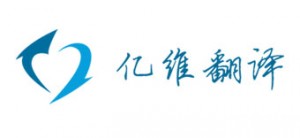如何翻译中国的传统文化

如何用英语介绍中国传统文化
全球人民都知道中国地大物博,有五千年未断层的文明。正是由于这种特质让中国传统文化显得格外有魅力,为全世界所景仰。
中国在地理位置上处于半封闭、高稳定的大陆地域,小农经济发展了几千年,皇权专制了几千年,半封闭的发展持续了几千年。中国传统文化受到外界的干扰比较少,所以民族风味浓厚而独特,有着无以伦比的生命延续力。虽然中国历史上曾经多次受到北方游牧民族的侵扰和征服,但从文化上,不是被征服者的文化被毁灭,反而是征服者对中国文化的皈依和认同。可见中国传统文化强大的生命力。
世界上研究中国文化的越来越多,那我们怎么样给外国朋友介绍我们引以为傲的传统文化呢?历史太长,我们无法短时期内介绍清楚。不妨先把中国的一些传统游戏、传统工艺、传统习俗介绍给外国朋友。
例如:中国龙
Chinese Dragon
Dragon totem worship in China has been around for the last 8,000 years. The ancients in China considered the dragon (or loong) a fetish that combines animals including the fish, snake, horse and ox with cloud, thunder, lightning and other natural celestial phenomena. The Chinese dragon was formed in accordance with the multicultural fusion process of the Chinese nation. To the Chinese, the dragon signifies innovation and cohesion.
对龙图腾他的崇拜在中国大约已绵延了八千多年。 中国龙是古人将鱼、蛇、马、牛等动物与云雾、雷电等自然天象集合而成的一种神物。 中国龙的形成与中华民族的多元融合过程同步。在中国人的心目中,龙具有振奋腾飞、开拓变化的寓意和团结凝聚的精神。
剪纸
Paper cut is one of the most popular Chinese decorative folk arts.Traditional paper cut is also called “Window blossoms” because they were first put on windows for decoration.Window blossoms are put on windows in all parts of China during Spring Festival.This custom has a long history which not only brings festivity to the holiday, but is also a symbol for people to express their wishes for welcoming the new year, blessings, and fortunes.Generally speaking, farming women from North China pay special attention to concept, so the design flows with their thoughts.Paper cut in South China is well known for its exquisite, elegant, realistic style.Therefore, northern and southern paper cut can be distinguished as free and rugged, or elegant and exquisite, respectively.This reflects the difference in disposition and personality between the northern and southern parts of China.
剪纸是中国最普及的民间装饰艺术之一。传统的剪纸也叫做“窗花”,因为它最初就是贴在窗户上作为装饰用的。中国各地在春节期间都要在窗子上贴上寓意吉祥的窗花。这个习俗历史悠久,美丽的窗花不仅能妆点节日的气氛,还寄托了人们辞旧迎新,接福纳祥的美好愿望。一般来说,北方广大农村劳动妇女注重剪纸所表达的观念,想到哪儿剪到哪儿。而南方剪纸玲珑剔透 严整优雅,以写实风格著称。于是形成了北方剪纸粗犷随意,南方水乡剪纸精致明快的“北犷南秀”的鲜明特色。反映了北方大陆与南方水乡劳动群众的性格气质。
筷子
Chinese Chopsticks
The Chinese way of eating with chopsticks is unique in the world. The recorded history of chopsticks started more than three thousand years ago. Chopsticks were named zhu in ancient Chinese. They look deceptively simple to use, but possess multi-various functions, such as clamping, turning over, lifting up, raking, stirring, scooping, poking, tearing, and so on. Chopsticks were taken as an auspicious mascot by ordinary people in ancient China. For example, the partial tone of chopsticks is often used by people as a metaphor at weddings to indicate a blessing or benediction for the couple to have a baby soon. Unlike using a knife and fork or one’s own hands, a pair of chopsticks also implies the meaning of “Harmony is what matters”. Chopsticks are highly praised by Westerners as a hallmark of ancient oriental civilization.
中国人使用筷子就餐的方式在世界上独树一帜。有史记载用筷的历史已有三千多年。筷子古时称为箸,它看似简单,但却同时具有夹、拨、挑、扒、拌、撮、戳、撕等多种功能。中国民间视筷子为吉祥之物,如婚俗中将筷子隐喻为快生贵子的祝福等。与使用刀叉以及手抓的方式不同,成双结对的筷子含有“和为贵“的意蕴。西方人赞誉筷子是古老的东方文明。
道教
Chinese Taoism
Taoism first originated in China. The founder of Taoism is Laozi, a philosopher and thinker who lived in the late Spring and Autumn Period (770BC-476BC). Tao Te Ching whose authorship has been attributed to Laozi, is considered to be the main Taoist classic. Taoism advocates the value of a human being’s life, recommends the discarding of all desires and worries from one’s mind, and encourages the cultivation of moral character and the nourishment of human nature. The following is an example of Laozi’s golden saying:
The way that can be told of is not an unvarying way;The names that can be named are not unvarying names.It was from the nameless that Heaven and Earth sprang;The named is but the mother that rears the ten thousand creatures, each after its kind.Truly, only he that rids himself forever of desire can see the secret essences;He that has never rid himself of desire can see only the outcomes.
道教是中国土生土长长的宗教。创始人是春秋末期的哲学家、思想家老子。道教以老子所著的《道德经》为主要经典。道教主张“重人贵生”。崇尚清静无为,修身养性。“道可道,非常道。名可名,非常名。无名天地之始;有名万物之母。故常无,欲以观其妙;常有,欲以观其徼”便是老子的至理名言。
文房四宝
The Four Treasures of the Study
The writing brush, ink stick, ink stone, and paper were requisite treasures in the study of the scholars of ancient China, and they are often referred to as the “Four Treasures of the Study.” The writing brush and ink stick have been used by the Chinese to write and paint since 5,000 years ago. In the Qin Dynasty (221BC—206BC), people already used feathers of different hardness and bamboo trunks to make brushes. During the Han Dynasty (206BC-220AD), man-made ink was used instead of natural ink. After paper was invented by the Chinese, bamboo slips, wooden tablets, brocade and silk, which originally functioned as writing surfaces, gradually faded out. The ink stone was first developed with the use of writing brushes and ink. After the Song Dynasty (960AD—1279AD), the “Four Treasure of the Study” particularly referred to hubi, the writing brush produced in Huzhou, Zhejiang province; huimo, the ink stick produced in Huizhou, Anhui province; xuan paper, a kind of paper produced in Xuanzhou, Anhui province; and duanyan, the ink stone made in Zhaoqing, Guangdong province (Zhaoqing was earlier called Duanzhou). Indeed, the Four Treasures of the Study” have writtin the whole Chinese civilization, as it is.
笔墨纸砚是中国古代文人书房当中必备的宝贝,被称为“文房四宝”。用笔墨书写绘画在中国可追溯到五千年前。秦时已用不同硬度的毛和竹管制笔;汉代以人工制墨替代了天然墨;有了纸张以后,简牍锦帛逐失其用;砚台则随笔墨的使用而发展。 “文房四宝”到宋朝以后特指湖笔、徽墨、宣纸、端砚。可以说文房四宝书写了整个中华文明。
茶文化
China is a country with a time-honored civilization and also a land of ceremony and decorum. Whenever guests visit, it is necessary to make and serve tea to them. Before serving tea, you may ask them for their preferences as to what kind of tea they fancy, and serve them the tea in the most appropriate teacups. In the course of serving tea, the host should take careful note of how much water remains in the guests’ cups. Usually, if the tea is made in a teacup, boiling water should be added into the cup when half of the tea in it has been consumed; and thus the cup is kept filled and the tea retains the same bouquet.
中国是一个文化历史悠久的(time-honored)国度,也是一个礼仪(ceremony and decorum)之邦。每当客人来访,都需要泡茶给客人喝。在给客人奉茶之前,你应该问问他们都喜欢喝什么类型的茶,并采用最合适的茶具奉上。奉茶期间,主人需要仔细留意客人的茶杯里的茶量。通常,若是用茶杯泡的茶,在茶喝完一半之后就应该加开水,这样,茶杯就一直都是满的,茶的芳香(bouquet)也得以保留。
唐诗
The Tang Dynasty was the peak of Chinese classical poetry and many distinguished poets and poetry appeared during this period of less than 300 years. Up till now, over 50,000 poems and 2,000 poets of the Tang Dynasty have been well-known among people. The best-known poets during the Tang Dynasty are Li Bai and Du Fu. Being independent and full of talent, Li Bai created a great many poems to praise the wonderful mountains and brilliant rivers. Du Fu’s rough experiences when he was young made him know better about the darkness society and the people’s sufferings. The most popular Tang poems collection might be the 300 Tang Poems compiled by the scholar Sun Zhu of the Qing Dynasty. Tang poetry has had an ongoing influence on world literature and modern poetry.
唐代是中国古典诗歌的鼎盛时期,在不到300年的时间里,产生了许多著名的诗人和诗作。时至今日,有超过5万首唐诗和2000多位唐代诗人为人们所熟知。其中,唐代最著名的诗人是李白和杜甫。李白生性无拘无束,才华横溢,他创作了大量赞美祖国大好河山的诗篇。杜甫年轻时坎坷的生活经历,使他更好地了解了社会的黑暗和人民的困苦。最流行的唐诗作品集或许是由清朝的学者孙洙编著的《唐诗三百首》(300 Tang Poems)。唐诗一直在影响着世界文学和现代诗歌。


